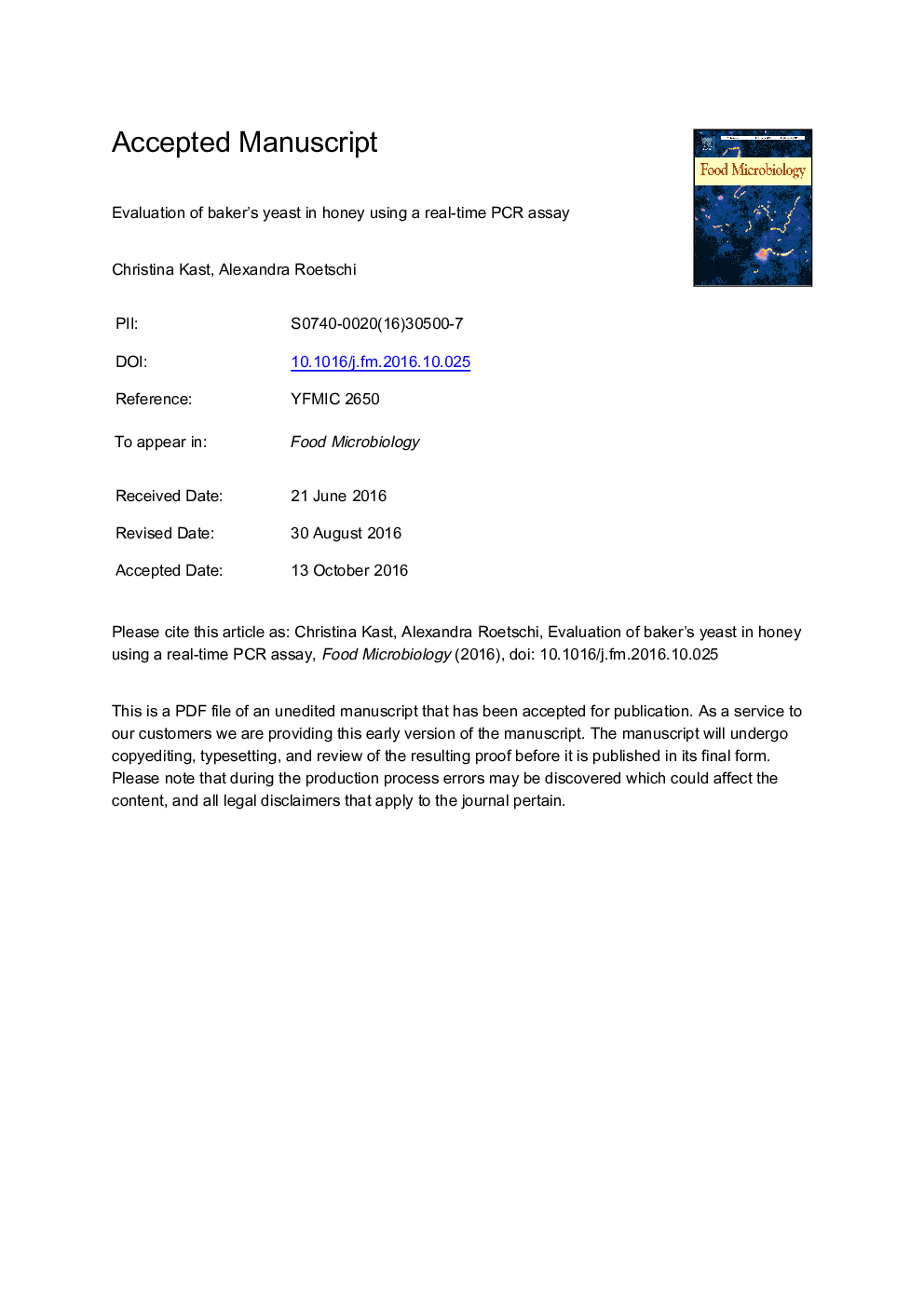| Article ID | Journal | Published Year | Pages | File Type |
|---|---|---|---|---|
| 8843659 | Food Microbiology | 2017 | 60 Pages |
Abstract
Occasionally, melissopalynological analysis reveals the presence of baker's yeast (Saccharomyces cerevisiae) in honey sediments. A field experiment reproducing a common spring bee feeding practice, using sugar paste containing baker's yeast, was performed to understand how S. cerevisiae are introduced into honey. Apart from classical microscopy, a real-time quantitative PCR (qPCR) system specific for S. cerevisiae was established for quantification of S. cerevisiae in honeys. Results showed that S. cerevisiae cells are stored in the honey of the brood combs and are also transferred into honey in the supers. The concentrations of S. cerevisiae were highest in honey of the brood frames immediately after the feeding and decreased over time to low concentrations at the end of the year. A high content of S. cerevisiae cells were also found in the honey from supers of the spring harvest. Observed S. cerevisiae cells were not able to multiply in a high-sugar environment, such as honey, and their viability decreased rapidly after addition to the honey. The screening of 200 Swiss honeys revealed the presence of S. cerevisiae in 4.5% of the samples, as determined by microscopy and qPCR. Finally, the method described here may indicate an unwanted sucrose addition to honey through bee-feeding.
Related Topics
Life Sciences
Agricultural and Biological Sciences
Food Science
Authors
Christina Kast, Alexandra Roetschi,
